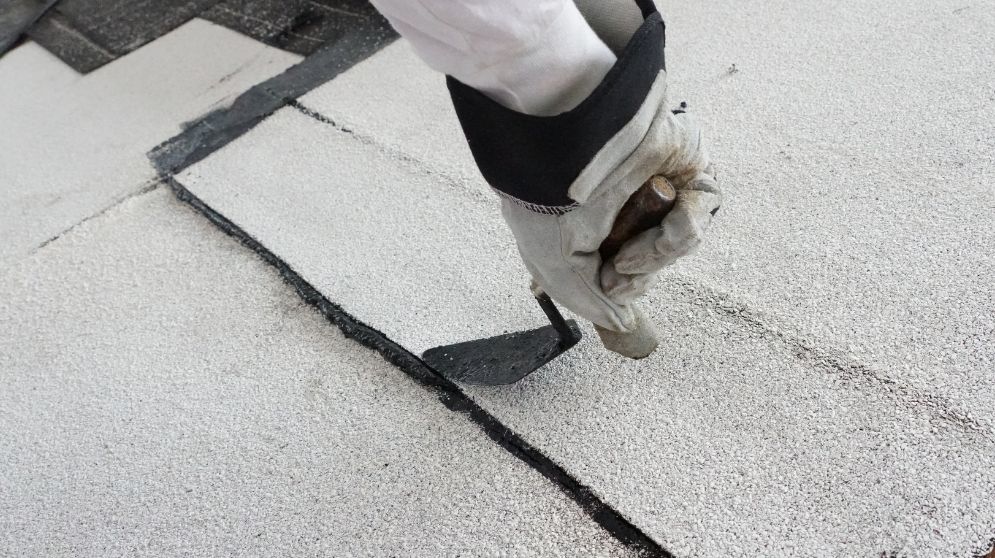One of the hallmark traits of a sustainable building is a reduction in the amount of energy required to operate that building. In our last post, we discussed how roofing materials can contribute to sustainability by virtue of the manufacturing and life cycle process of the products. Now, let’s look at how a well-designed and installed roofing system impacts energy conservation and reduces environmental impact.
Heat Flow: The roofs of all buildings can lose heat from the interior (i.e., during heating season) or gain heat from the sun (i.e., during cooling season). If the building is a large, low-rise building such as a store, school, industrial building, or warehouse, then the roof area could be larger than the wall areas and can be one of the most significant sources of heat transfer. Therefore, designing a roofing system with plenty of insulation to slow the unwanted heat flow is a fundamental key to any energy-efficient building. Further, making that insulation continuous, without any interruptions from framing members, structure, or other building components assures the insulation value is not compromised or reduced.
Air and Moisture Sealing: Roofing membranes are designed to be a water barrier between the outdoors and the building. However, most installations also require air and vapor barriers that prevent any air infiltration or moisture from entering into the roof assembly. This is good for the longevity of the roof and the building, but it also helps to assure that unwanted air and moisture are not transferring through the roof and creating a need for more heating or cooling energy. It is easy to imagine this being achieved in flat, continuous roof areas, but, it is the details around openings, transitions, or edges that are critical area for the continuity of air and vapor barriers. Each condition needs to be scrutinized during both design and construction, employing products or materials specifically made to assure full, continuous, performance.
Solar Reflectance: A large, dark-colored roof area will get hot when the sun is shining on it just as a dark parking lot is hot to walk across on a summer day. The heat generated by a hot roofing membrane can find its way back into the building, thus creating a need for more energy to be consumed for cooling. A typical way to overcome these issues is to use a roofing membrane or system that reflects sunlight away from it, thus not allowing it to turn into heat in the first place. Roofing products are rated for solar reflectance, with higher values being favorable to reduce energy consumption in buildings, and can be specified accordingly.
State-by-State Initiatives: A small number of states have started to mandate alternative energy and conservation actions to alleviate the growing energy use. One example of these initiatives is California’s Title 24, Part 6. Title 24 requires a roof system that provides a specific initial solar reflectivity and emissivity rating as well as a three-year aged performance value from an accredited third-party test lab which measures field aging in multiple locations. California is not alone, Illinois, specifically Chicago, has its own requirement. The City of Chicago Energy Code requires a higher reflectivity rating obligation than most other areas of the country. Chicago also has other mandates around conservation that include the necessity for a certain number of vegetative roofs too. New York, TX, and others also have adopted various requirements; often, they require not only a cool roof but also additional insulation per ASHRAE 90.1.
Solar Energy Systems: One of the fastest-growing solutions to reducing energy consumption from fossil fuels is to generate electricity with an onsite solar photovoltaic (PV) system. Most commonly, the electrical energy generated by the sun is sold back to the utility grid and can replace all or part of the energy that a building relies on from the same utility grid. A typical place to locate the solar energy system is on the roof of a building, since it provides a large expansive area open to the sky. Some roofing manufacturers have recognized the growing demand for this approach and provide roofing systems and accessories specifically designed to be compatible with, and accommodating to, solar energy systems. Selecting such roofing products helps make the solar system easier to install and trouble-free over its life.
Conclusion: Roof systems can have a significant impact on the energy consumed in a building. If designed and/or installed poorly or improperly, the roof may still be watertight and functional, but the building owner is left wondering why the energy bills are so high. If care is taken, making sure all of the energy-related aspects discussed above are addressed, then the roof will likely last longer, perform better, and reduce the environmental impact that the building creates.
To find out more about any of the ways that roofing can reduce energy use, contact your Johns Manville representative.

